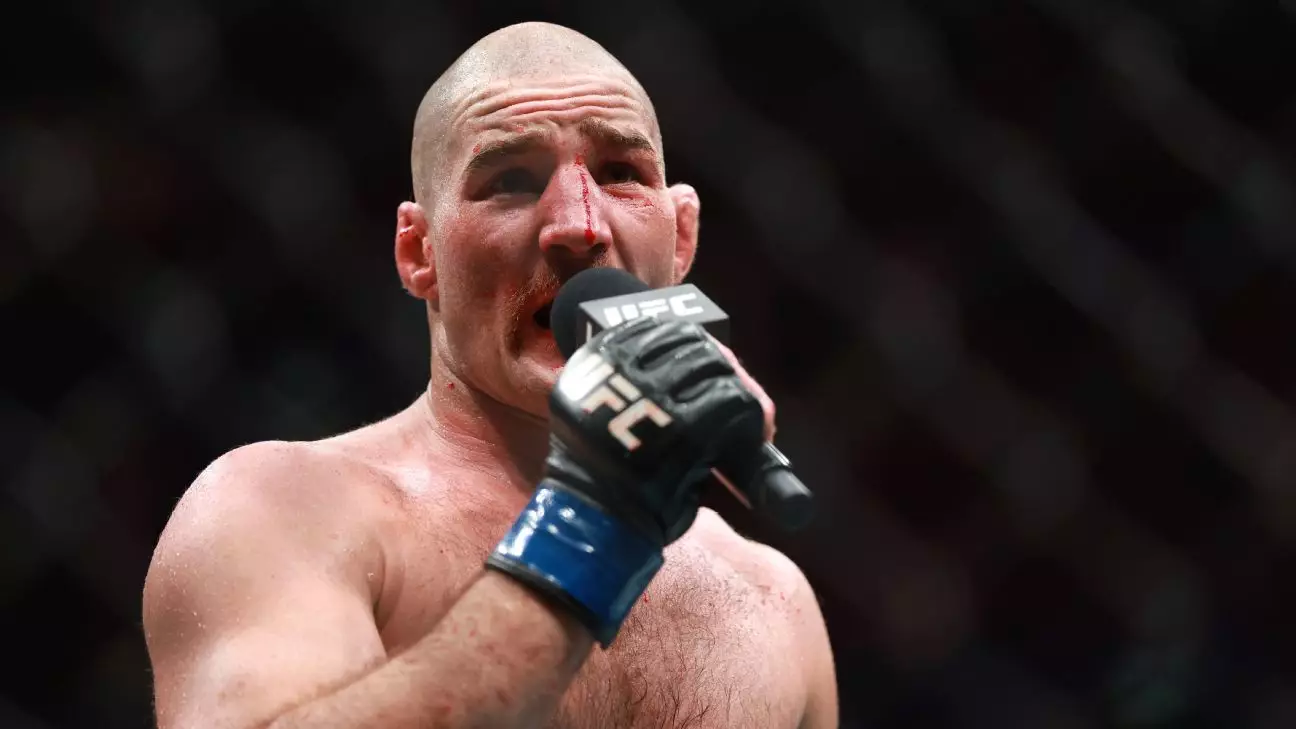In the high-stakes world of mixed martial arts (MMA), the relationship between fighters and their coaches can be as complex as the fights themselves. Recently, this dynamic came under intense scrutiny when former UFC middleweight champion Sean Strickland took to social media to respond to public criticism made by his coach, Eric Nicksick, following Strickland’s lackluster performance in a title rematch against Dricus Du Plessis at UFC 312. The subsequent fallout raises questions about accountability, loyalty, and the expectations within the sport.
Strickland’s Discontent: A Fighter’s Perspective
Strickland expressed clear indignation over Nicksick’s comments that his performance was “underwhelming” and described him as appearing to be “sleepwalking” in the Octagon. Such vivid language from a coach carries significant weight – it implies a failure not just of the fighter but of the preparation and strategy they engaged in leading up to the match. Strickland, reflecting on his performance which resulted in a 50-45, 50-45, and 49-46 loss, felt that Nicksick’s remarks were not only unwarranted but publicly humiliating. His decision to respond in a video stems from a desire to reclaim agency over his narrative and to clarify misconceptions about his dedication to the sport.
The athlete’s reaction to statements by a figure who has played a major role in his career illustrates an underlying tension that often goes unnoticed in sports. Such public exchanges showcase the thin line between constructive criticism and demoralization. Strickland’s frustration highlights an essential aspect of professional sports: the need for fighters to maintain mental fortitude amid external judgments, particularly from those who are supposed to support and elevate them.
Coach Eric Nicksick’s remarks, made during an appearance on “The Ariel Helwani Show,” reveal a fundamental philosophical difference between himself and Strickland regarding motivations in the sport. Nicksick’s assertion that he wants to coach “world champions” speaks to the high aspirations coaches often hold, which may not always align with the mindset of the fighters they train. As Nicksick queried Strickland’s commitment—pondering whether he was merely in it for the financial reward—it raises the question of how expectations from coaches can impact athletes’ morale.
For Strickland, the integrity of his work ethic is paramount. While he has acknowledged wanting to win and make money from the sport, his insistence on pushing through injuries like a broken arm and a staph infection demonstrates his dedication. This complexity reiterates the mantra that in elite sports, competitor resilience is as crucial as the physical aspects of training.
Strickland’s decision to publicly respond to Nicksick’s comments via social media exemplifies the growing intersection of sports, public relations, and influencer culture. Social media platforms have transformed the landscape of athlete accountability, as fighters can now counter narratives in real-time. Strickland’s video was more than a rebuttal; it was a strategic move to frame the discussion around his performance on his own terms.
Yet, this also poses risks. As high-stakes as the fight game is, the added pressure of public scrutiny can lead to athletes feeling compelled to defend themselves or explain personal struggles. Strickland themselves noted that the fight camp was filled with “struggles,” suggesting feelings of inadequacy in performance despite his injuries. The reflective nature of his video reveals a vulnerability rarely displayed amidst the braggadocio associated with combat sports.
Moving Forward: A Shift in Dynamics
Strickland’s insistence that Nicksick “will probably not” be in his corner again points to a potential seismic shift in his training strategy. With the option to explore other coaches at the Xtreme Couture gym, Strickland is clearly reevaluating what he needs moving forward. This shift raises conversations within the sport about the necessity of compatibility in the fighter-coach relationship—an alignment of visions that can significantly impact results.
Whether this rift ultimately leads to stronger performances from Strickland or a continued cycle of public disputes remains uncertain. However, the conflict between him and Nicksick serves as a potent example of how personal motivations, external perceptions, and the brutal nature of professional fighting can coalesce into a multifaceted narrative where recovery, identity, and conflict all play pivotal roles. The world of MMA will undoubtedly be watching as Strickland forges ahead, hoping to reclaim his spot at the top while navigating the complexities of loyalty and ambition.


Leave a Reply